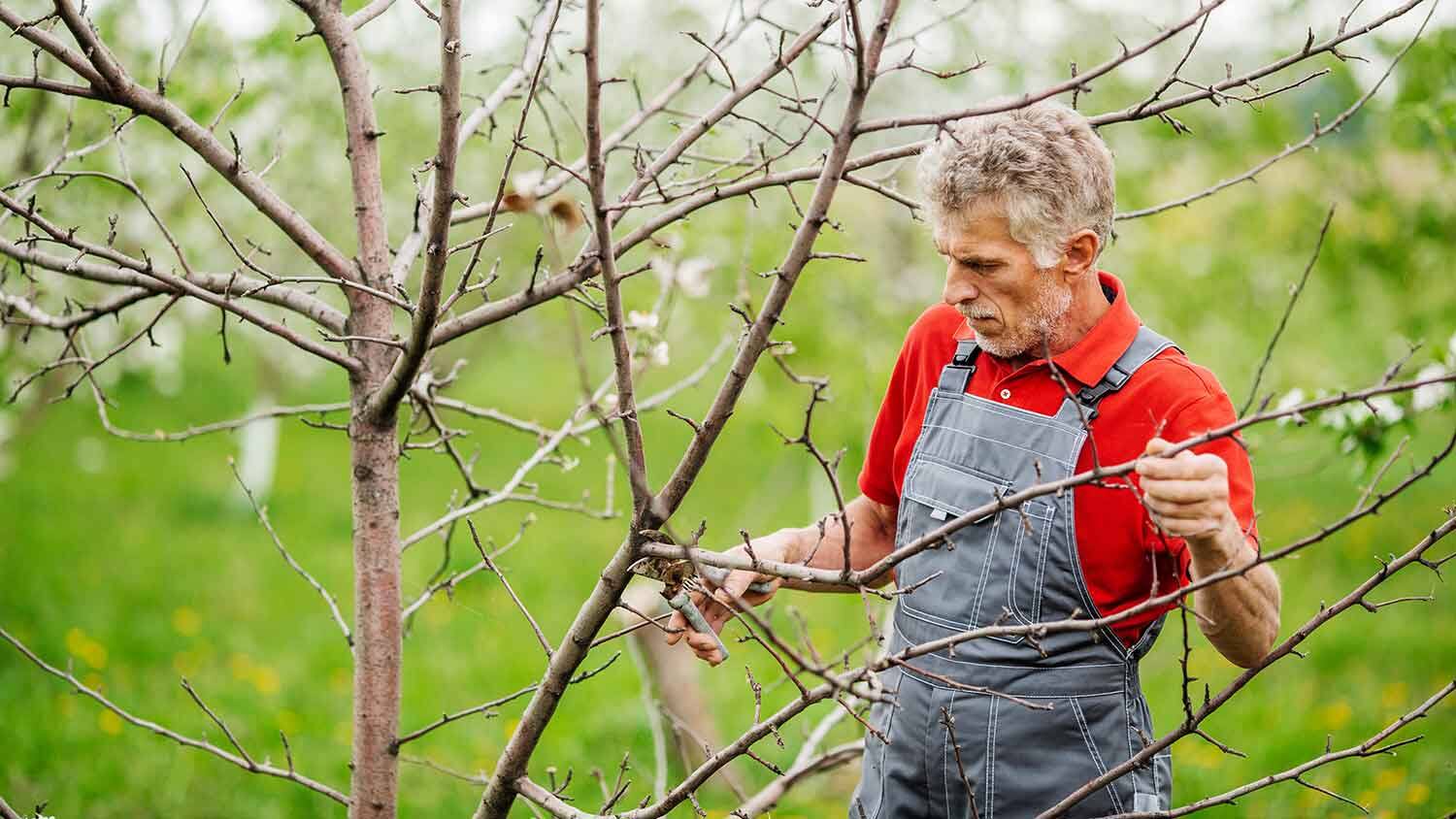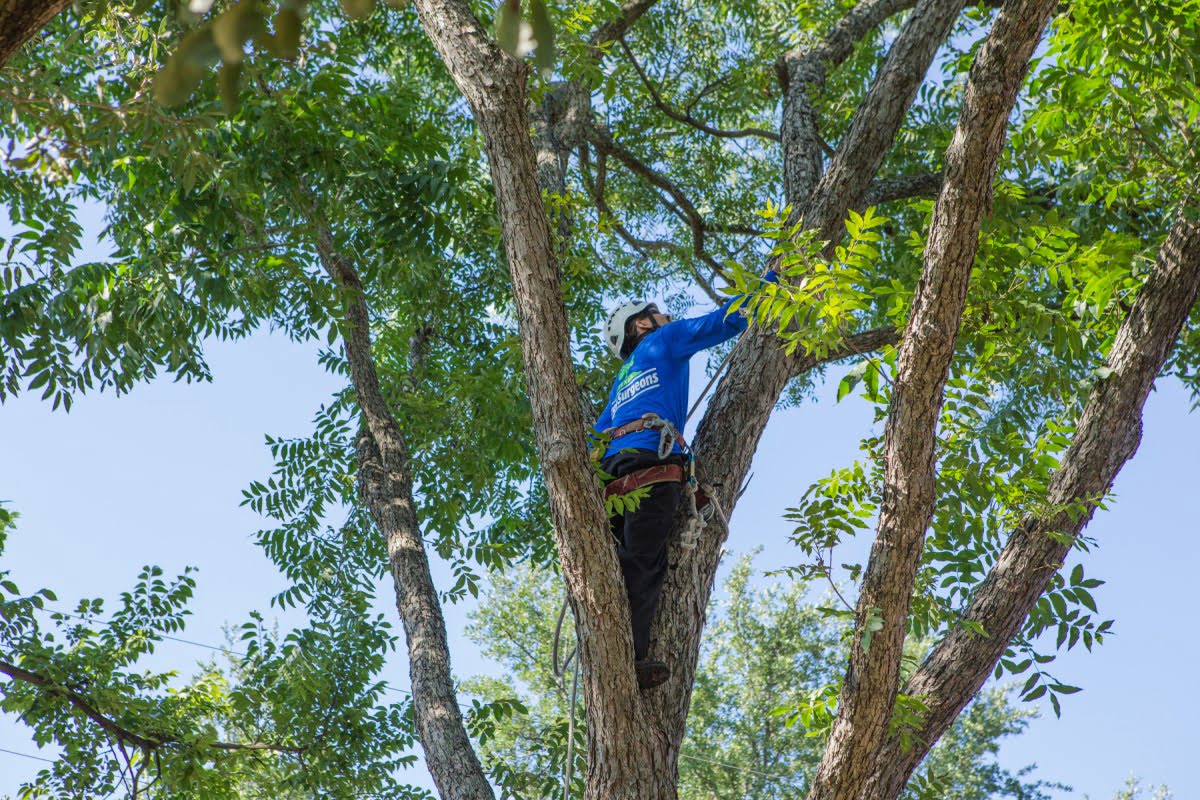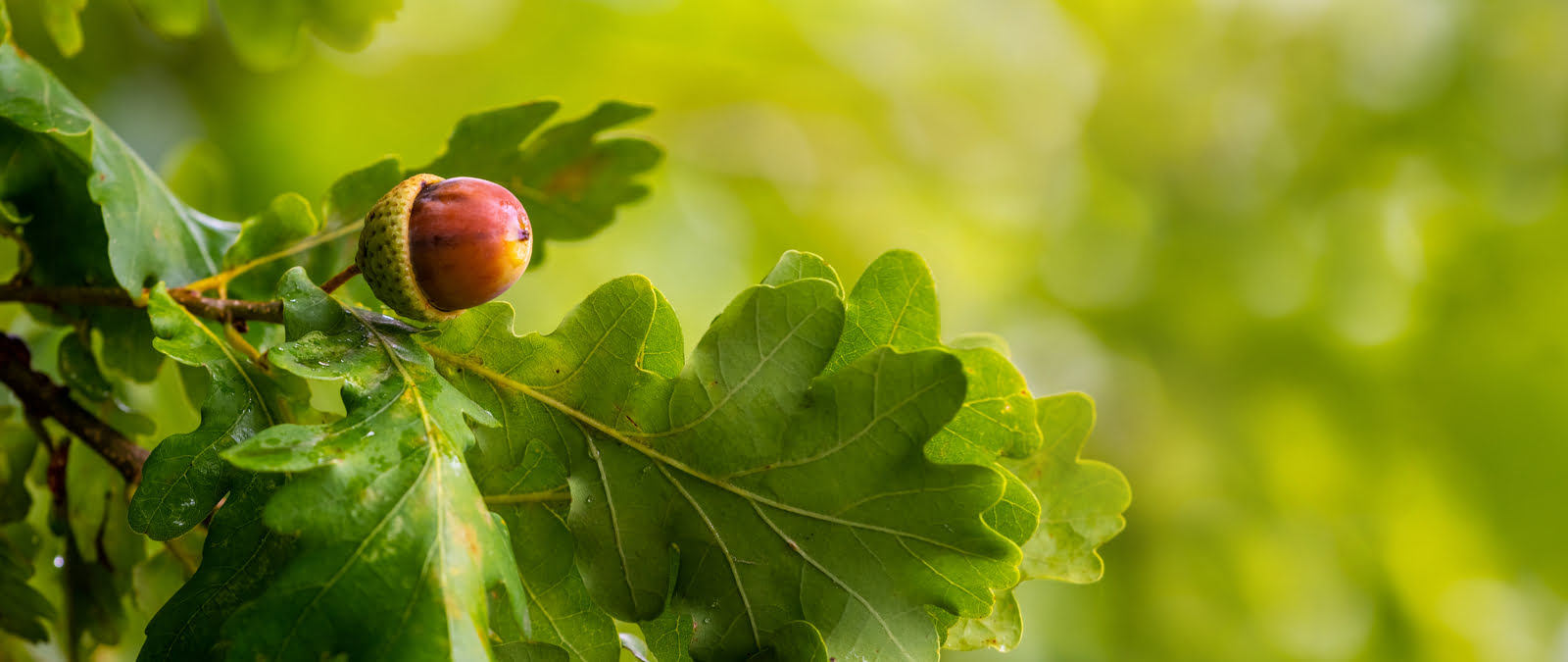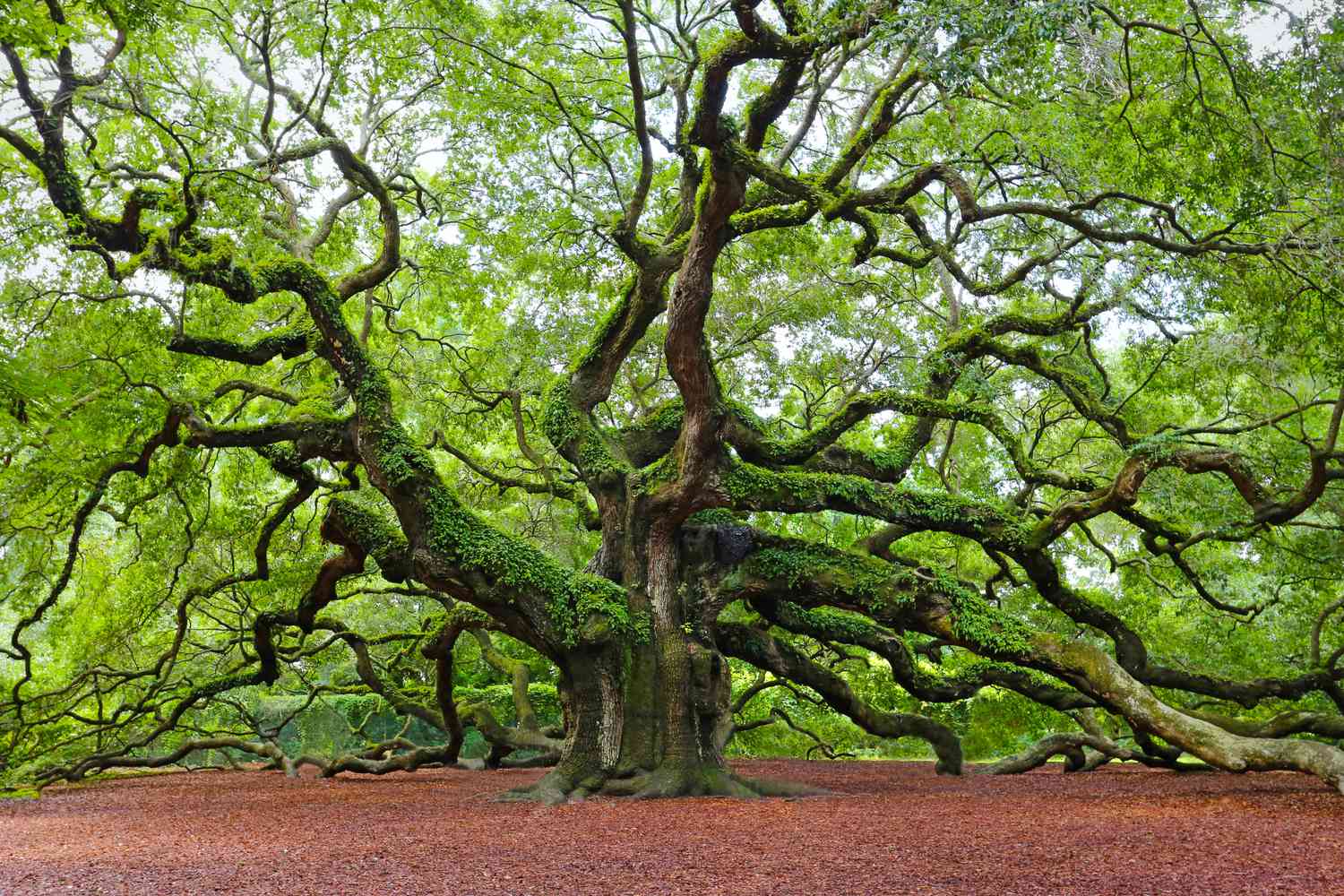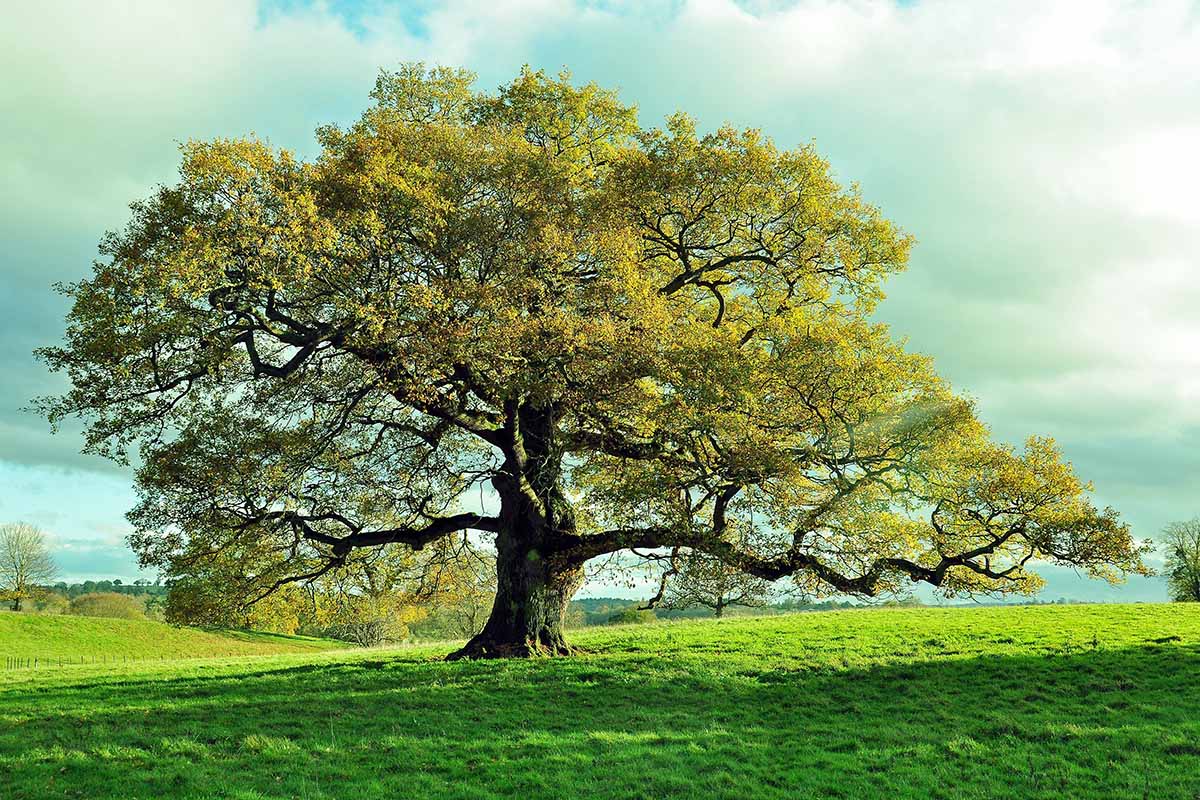Home>Gardening Techniques>Plant Care>When To Trim Oak Trees
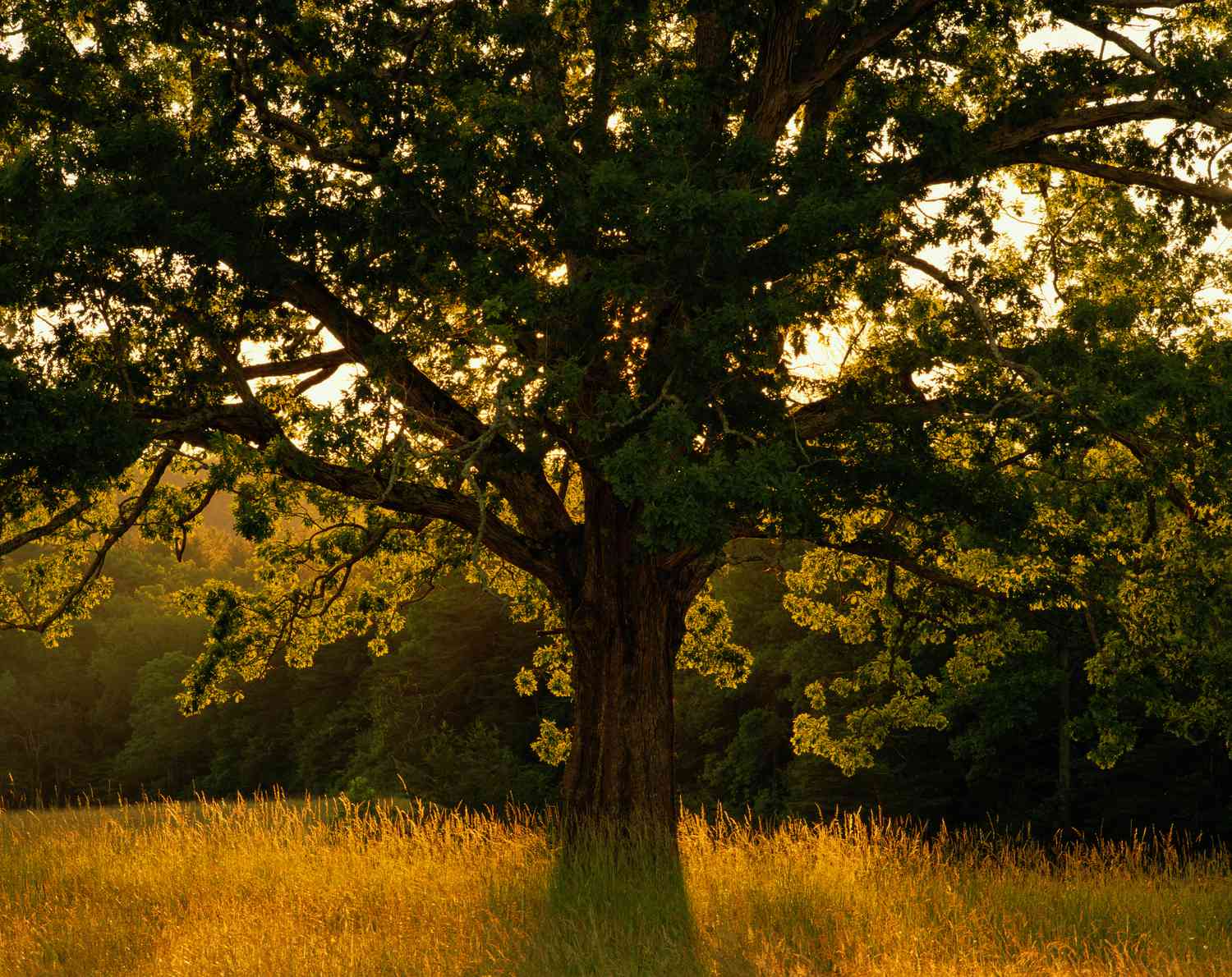

Plant Care
When To Trim Oak Trees
Modified: January 22, 2024
Learn the best time for oak tree trimming and proper plant care techniques. Discover essential tips for maintaining healthy and beautiful oak trees.
(Many of the links in this article redirect to a specific reviewed product. Your purchase of these products through affiliate links helps to generate commission for Chicagolandgardening.com, at no extra cost. Learn more)
Table of Contents
Introduction
Welcome to the world of oak trees! Oaks are renowned for their majestic beauty and their ability to provide shade and shelter. However, like any living organisms, oak trees require care and maintenance to thrive. One essential aspect of oak tree care is trimming or pruning. Trimming oak trees not only helps maintain their health and appearance but also promotes safety by removing dead or hazardous branches.
In this article, we will delve into the topic of oak tree trimming, covering various aspects such as when to trim oak trees, signs that indicate the need for trimming, best practices for pruning, necessary tools and equipment, and safety precautions. Whether you are a seasoned gardener or a novice plant enthusiast, this guide will equip you with the knowledge and techniques to effectively trim your oak trees and keep them in their optimal condition.
Trimming oak trees is not a task to be taken lightly. It requires careful planning, proper technique, and the use of appropriate tools. Understanding when and how to trim your oak trees will ensure that you achieve the desired results while minimizing any potential harm to the tree. So let’s dive in and explore the fascinating world of oak tree trimming!
Signs that Oak Trees Need Trimming
Knowing when to trim your oak trees is crucial to maintain their health and appearance. Regular tree inspections can help you identify signs that indicate the need for trimming. Here are some common signs that your oak trees may require pruning:
- Overgrown branches: If you notice that the branches of your oak trees are growing too long or have become tangled, it is a clear indication that trimming is needed. Overgrown branches can pose a risk of breakage, especially during storms or high winds.
- Dead or diseased branches: Dead or diseased branches not only detract from the tree’s overall aesthetics but can also be hazardous. Pruning these branches is essential to prevent the spread of infections and to maintain the tree’s health.
- Interference with structures: If the branches of your oak trees are interfering with power lines, buildings, or other structures, it is necessary to trim them back. This will help prevent any potential damage and ensure the safety of both the tree and surrounding structures.
- Crowded or crossing branches: When branches from different parts of the tree grow too close to each other or start crossing each other, they can rub against each other, causing wounds and increasing the risk of disease. Trimming these branches will help maintain proper spacing and prevent any potential damage.
- Reduced sunlight penetration: If you notice that certain areas of your garden or yard are not receiving enough sunlight due to the dense canopy of your oak trees, it might be time to trim some branches to allow more sunlight to reach the plants beneath.
It is important to note that while these signs indicate the need for trimming, it is essential to assess each tree individually. Consulting with a professional arborist can help determine the extent of pruning required and ensure the health and longevity of your oak trees.
Best Time of Year for Oak Tree Trimming
Timing is crucial when it comes to trimming oak trees. Choosing the right time of year for pruning plays a significant role in ensuring the health and vitality of the tree. The general rule of thumb for oak tree trimming is to avoid pruning during the active growing season and to perform the majority of the pruning during the dormant season. Here are the best times of the year for oak tree trimming:
- Winter: Late winter, typically January to February, is an ideal time for oak tree trimming. During this time, the tree is dormant, and the absence of leaves makes it easier to identify the tree’s structure and branch placement. Winter pruning also reduces the risk of diseases, as fungal pathogens and insects are less active.
- Early spring: If you missed the window for winter pruning, early spring, before new growth begins, is another suitable time for oak tree trimming. However, it is important to complete the pruning before the buds start to break open.
- Avoid pruning in summer: It is generally recommended to avoid pruning oak trees during the summer months. Pruning during this time can be stressful for the tree and may create wounds that are more susceptible to diseases and pests.
It is important to note that oak trees are susceptible to a disease called oak wilt, caused by the fungus Ceratocystis fagacearum. Oak wilt is most active during the spring and early summer when certain beetles, responsible for spreading the disease, are active. To prevent the spread of oak wilt, it is advisable to avoid pruning oak trees during this period.
Additionally, it is crucial to check local regulations and guidelines, as certain areas may have specific restrictions on oak tree pruning to prevent the spread of oak wilt or protect nesting birds.
Remember, proper timing is vital to ensure the overall health and vigor of your oak trees. If you are unsure about the best time to trim your oak trees, consult with a certified arborist who can provide guidance specific to your region and tree species.
Factors to Consider Before Trimming Oak Trees
Before grabbing your pruning shears and heading out to trim your oak trees, there are several important factors to consider. Taking these factors into account will help ensure that you approach the pruning process in the most effective and responsible way possible. Here are some key considerations:
- Tree species: Different species of oak trees may have specific requirements when it comes to pruning. Understanding the specific needs of your oak tree species will help you determine the appropriate pruning techniques and timing.
- Tree age and health: The age and overall health of your oak trees play a crucial role in determining the extent and frequency of pruning required. Younger trees may require more frequent pruning to establish a strong framework, while older trees may only need occasional maintenance pruning.
- Goals and objectives: Consider the reasons why you want to trim your oak trees. Are you looking to improve the tree’s structure, enhance its appearance, or mitigate potential hazards? Clearly defining your goals will help guide your pruning decisions.
- Seasonal restrictions: As mentioned earlier, certain regions may have restrictions on oak tree pruning to prevent the spread of diseases like oak wilt or to protect nesting birds. Be aware of any local regulations and guidelines in your area.
- Professional help: If you are unsure about the specific needs of your oak trees or lack the necessary pruning skills, it is advisable to consult with a certified arborist. They have the expertise and experience to assess your trees’ conditions and provide professional guidance and services.
- Overall landscape design: Consider the impact of oak tree trimming on the overall landscape design. Prune your oak trees in a way that enhances the aesthetic appeal, maintains proper proportions, and complements the surrounding plants and structures.
By taking these factors into account before trimming your oak trees, you can ensure that the pruning process is carried out in a manner that supports the health and longevity of the trees while meeting your specific goals and objectives.
Pruning Techniques for Oak Trees
Pruning oak trees requires proper technique to ensure the health and structural integrity of the tree. Here are some essential pruning techniques to keep in mind when trimming your oak trees:
- Remove dead and diseased branches: Start by identifying and removing any dead, dying, or diseased branches. These branches not only detract from the tree’s appearance but can also harbor pests and diseases that can spread to the rest of the tree.
- Thin out overcrowded branches: If there are branches that are crossing each other or growing too close together, selectively remove some of the branches to improve air circulation and reduce the risk of disease and branch breakage.
- Prune for structure: Consider the long-term structure of the oak tree when pruning. Remove any branches that are too close to the trunk or growing at weak angles. Prune to create a strong central leader and well-spaced lateral branches.
- Utilize proper pruning cuts: Make clean and precise pruning cuts to minimize damage to the tree. Cut just outside the branch collar, the swollen area where a branch joins a larger branch or the trunk.
- Do not over-prune: Avoid excessive pruning as it can weaken the tree. Aim to maintain the natural shape and form of the oak tree while removing only what is necessary for its health and safety.
- Consider the size of the branch: When removing larger branches, use a three-cut technique to prevent bark tearing. Make an undercut first, followed by a second cut a few inches further down the branch. Finally, make the final cut just outside the branch collar.
- Avoid pruning in wet conditions: Pruning oak trees when the foliage is wet can increase the risk of disease transmission. It is best to prune on dry days to allow the wounds to dry quickly.
Remember, proper pruning techniques are essential for maintaining the health and structural integrity of your oak trees. If you are unsure about any aspect of pruning, consult with a certified arborist who can guide you through the process and ensure the best outcomes for your trees.
Tools and Equipment Needed for Oak Tree Trimming
Having the right tools and equipment is crucial for successful oak tree trimming. Here are some essential tools you will need to effectively prune your oak trees:
- Pruning shears: Also known as hand pruners or secateurs, pruning shears are used for cutting smaller branches and twigs. Look for a high-quality pair with sharp blades that can easily make clean cuts.
- Loppers: Loppers have longer handles and larger cutting blades, making them ideal for pruning thicker branches (up to 2 inches in diameter). Choose loppers with sturdy handles and a cutting mechanism that allows for easy cutting.
- Pole pruners: For branches that are out of reach, a pole pruner can be used. These tools consist of a long, extendable pole with a cutting head attached to the end. Look for a pole pruner with a sharp blade and a secure locking mechanism.
- Pruning saw: A pruning saw is useful for cutting through thicker branches that cannot be easily handled by loppers. Choose a pruning saw with a curved, narrow blade that allows for precise cuts.
- Safety gear: Prioritize safety by wearing essential protective gear such as gloves, safety glasses, and a helmet. Gloves will protect your hands from cuts and scratches, while safety glasses will shield your eyes from flying debris. A helmet will provide extra protection in case of accidental falls.
- Ladder or reach tool: Depending on the height of your oak trees, you may need a ladder or a reach tool to access branches that are higher up. Ensure that the ladder is stable and secure, and follow proper safety precautions when using it.
- Sharpening tools: Keep your pruning tools sharp by using a sharpening stone or file. Dull tools can make pruning difficult and can cause damage to the tree.
- Disinfectant: To prevent the spread of diseases between cuts, it is important to clean and disinfect your pruning tools before and after using them on different trees or branches. Use a disinfectant spray or wipe to sterilize the blades.
Investing in high-quality tools and maintaining them properly will make the pruning process more efficient and effective. Remember to follow safety precautions, wear appropriate gear, and handle the tools with care to prevent any accidents or injuries.
Safety Precautions for Trimming Oak Trees
When it comes to trimming oak trees, safety should be your top priority. Working with trees can pose certain risks, but by following proper safety precautions, you can minimize the chances of accidents and injuries. Here are some important safety guidelines to consider when trimming oak trees:
- Use appropriate safety gear: Wear protective clothing, including gloves, safety glasses, and a helmet, to shield yourself from potential hazards. Gloves will provide grip and protect your hands from cuts, while safety glasses will prevent debris from entering your eyes.
- Inspect the tree and surrounding area: Before starting the trimming process, carefully inspect the tree for any existing hazards, such as dead branches, cracks, or unstable limbs. Also, take note of any nearby obstacles, such as power lines or structures, that may interfere with the pruning process.
- Ensure stable footing: Use a sturdy and well-maintained ladder or foot spikes with safety straps to ensure stable footing while working at heights. Place the ladder on level ground and have someone support the base if possible. Avoid overreaching or leaning excessively while on the ladder.
- Work with a partner: Trimming oak trees can be challenging, especially for larger branches or when working at heights. Having a partner assist you can greatly enhance safety by providing extra support, handing tools, and alerting you to any potential hazards.
- Be cautious of power lines: Always be aware of the location of power lines when trimming oak trees. Maintain a safe distance of at least 10 feet from power lines and never attempt to trim branches that are in contact with or near power lines. Contact a professional utility company to handle those situations instead.
- Use proper cutting techniques: Follow proper pruning techniques to minimize the risk of injury. Make clean cuts just outside the branch collar, and avoid removing large branches all at once to prevent the tree from becoming unbalanced or falling in an uncontrolled manner.
- Practice ladder safety: When using a ladder for trimming, ensure it is on stable ground and that all locking mechanisms are secured. Do not overreach or stand on the top rungs of the ladder. Consider using a spotter to stabilize the ladder and provide assistance if needed.
- Know your limitations: If the oak tree is too large or the branches are too high to safely reach, consider hiring a professional arborist. They have the expertise and equipment necessary to handle more challenging pruning tasks and can ensure the job is done safely and efficiently.
By following these safety precautions, you can minimize the risks associated with trimming oak trees and create a safer environment for both yourself and those around you. Remember, it is always better to prioritize safety and seek professional help whenever necessary.
Conclusion
Trimming oak trees is an important aspect of their care and maintenance. By regularly pruning your oak trees, you can enhance their health, appearance, and safety. Throughout this article, we have explored various aspects of oak tree trimming, including signs that indicate the need for pruning, the best time of year for trimming, factors to consider before pruning, pruning techniques, necessary tools and equipment, and safety precautions.
Remember to keep a watchful eye for signs such as overgrown branches, dead or diseased branches, interference with structures, crowded branches, and reduced sunlight penetration, as they indicate the need for trimming. Consider the specific timing requirements based on your oak tree species, age, and overall health. Take into account factors such as goals and objectives, seasonal restrictions, and the overall landscape design when planning your pruning activities.
To ensure successful pruning, utilize proper pruning techniques, such as removing dead and diseased branches, thinning out overcrowded branches, and pruning for structural integrity. Invest in the necessary tools and equipment, and prioritize safety by using appropriate safety gear, inspecting the tree and surrounding area, maintaining stable footing, and being cautious of power lines.
Ultimately, keeping your oak trees in their optimal condition requires a delicate balance between pruning and preserving their natural beauty. If you find yourself unsure or overwhelmed, do not hesitate to seek professional help from certified arborists who can provide expert guidance and ensure the health and longevity of your oak trees.
Remember, trimming your oak trees is an ongoing process. By practicing regular maintenance and following the guidelines shared in this article, you can enjoy the benefits of healthy, beautiful, and safe oak trees for years to come.

